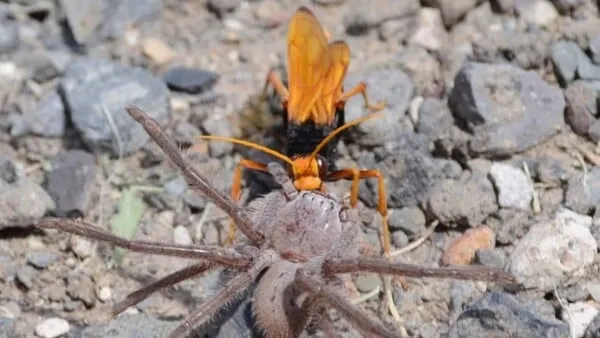What is a Tarantula Hawk
The tarantula hawk is a large, impressive species of spider wasp that is renowned for its size, vibrant colors, and exceptionally painful sting. These wasps are solitary creatures, and their primary function in the ecosystem revolves around the predation of tarantulas. The tarantula hawk is not just a predator, it is a symbol of the harsh beauty found in nature. Their presence in an area often signifies a healthy ecosystem where both the predator and prey can thrive. They play a significant role in controlling tarantula populations, thereby maintaining balance within their habitats. This magnificent creature is a true marvel of the insect world, with unique characteristics and behaviors that make it stand out among other wasp species.
Appearance and Identification
Tarantula hawks are easily recognizable due to their striking appearance. They are typically large, with females often reaching up to two inches in length. Their bodies are characterized by a metallic blue-black or black hue, and they have brightly colored wings. These wings are typically orange or rust-colored, giving the wasps a vivid contrast that makes them stand out against their surroundings. The combination of these features creates a visual spectacle that can be both intimidating and fascinating. Their robust build, powerful legs, and long antennae further contribute to their distinctive appearance. The size and the color are great ways to spot them in South Texas.
Habitat and Range
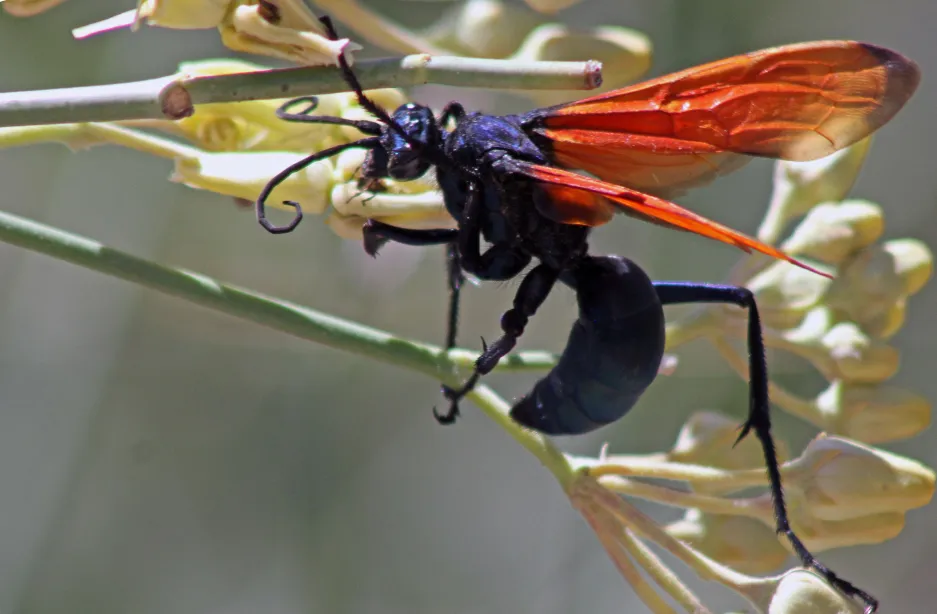
Tarantula hawks are primarily found in arid and semi-arid regions across the Americas, including the southwestern United States and parts of South America. These wasps prefer habitats with dry, open spaces, where they can hunt for tarantulas and build their nests. These habitats often include deserts, grasslands, and scrublands, where tarantulas are commonly found. The specific range of the tarantula hawk varies depending on the species, with some being more geographically restricted than others. They are highly adaptable insects, capable of surviving in harsh environments where water is scarce and temperatures fluctuate dramatically. In South Texas, they find the ideal environment, with plenty of tarantulas and favorable weather conditions.
The South Texas Connection
South Texas provides an ideal environment for tarantula hawks, offering a climate and ecosystem that supports both the wasps and their prey. The region’s warm, dry conditions and abundance of tarantulas create an environment that promotes the proliferation of these remarkable wasps. The diverse terrain, including grasslands, scrublands, and open areas, provides ample opportunities for hunting and nesting. The tarantula hawk’s presence in South Texas also contributes to the region’s biodiversity and ecological health. Due to the suitable environment, they play a key role in the local ecosystem and a regular sight for the residents of the area.
The Life Cycle of the Tarantula Hawk
The life cycle of the tarantula hawk is a fascinating process marked by specific stages, from egg to adult. The female wasp plays a crucial role in this cycle, as she is responsible for hunting and paralyzing a tarantula to serve as a host for her larvae. After paralyzing the tarantula, she drags it to a burrow or nest, where she lays a single egg on the spider’s abdomen. Once the egg hatches, the larva feeds on the paralyzed tarantula, growing and eventually pupating. This entire process can take several months, during which the larva undergoes significant changes. The life cycle of the tarantula hawk is a perfect example of the complex and often brutal realities of nature.
Mating and Nesting
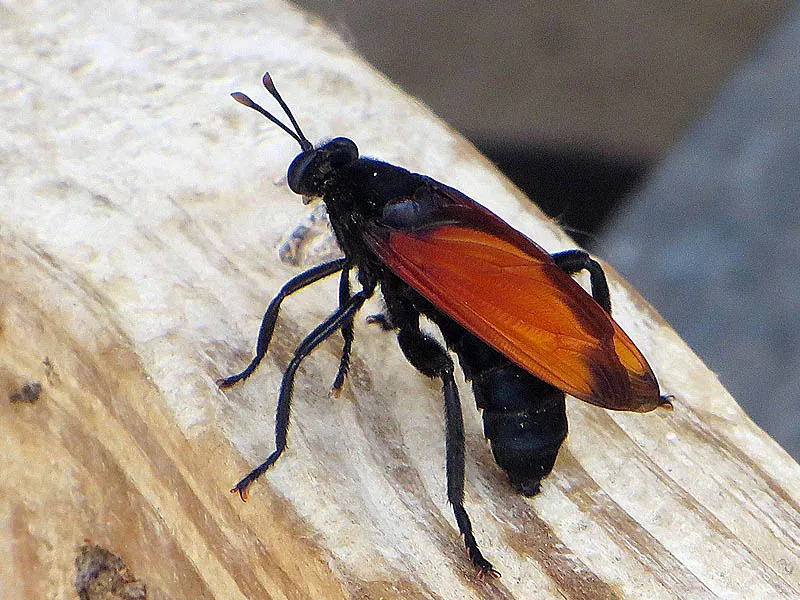
The mating process of tarantula hawks involves intricate courtship rituals that ensure successful reproduction. Males often engage in aerial displays to attract females, and the mating itself occurs after these displays. Females will then find a suitable nesting site, which can be a pre-existing burrow or one they excavate themselves. The nests are usually located in the ground or under rocks, providing a safe place for the developing larvae. The female wasp diligently prepares the nest, ensuring it is ready to receive the paralyzed tarantula and the egg. The choice of nesting site reflects the wasps’ adaptability to their environment and their commitment to safeguarding their offspring.
The Tarantula Hunt
The tarantula hunt is perhaps the most remarkable aspect of the tarantula hawk’s life. The female wasp actively seeks out tarantulas, often stalking them in their burrows or webs. Once she locates her prey, she engages in a fierce battle to subdue and paralyze the spider. The hunt can be a prolonged and dangerous undertaking, as tarantulas are formidable adversaries equipped with fangs and defensive behaviors. The wasp must use her agility, strength, and venom to overcome the tarantula’s defenses. The hunt is a critical element in the tarantula hawk’s survival, as it ensures the continuation of the species by providing a food source for the larvae.
The Paralysis Process
The method by which the tarantula hawk paralyzes its prey is a marvel of biological engineering. The wasp carefully positions itself to deliver a precise sting, usually targeting a nerve ganglion in the tarantula’s body. The sting injects venom that swiftly paralyzes the spider, rendering it immobile but still alive. This paralysis ensures that the tarantula remains fresh for the larva’s consumption, which will feed on the still-living spider. The ability to deliver a successful sting requires precision, timing, and a deep understanding of the tarantula’s anatomy. This paralysis mechanism illustrates the complex interplay between predator and prey in nature and highlights the unique adaptations of the tarantula hawk.
Sting and Venom
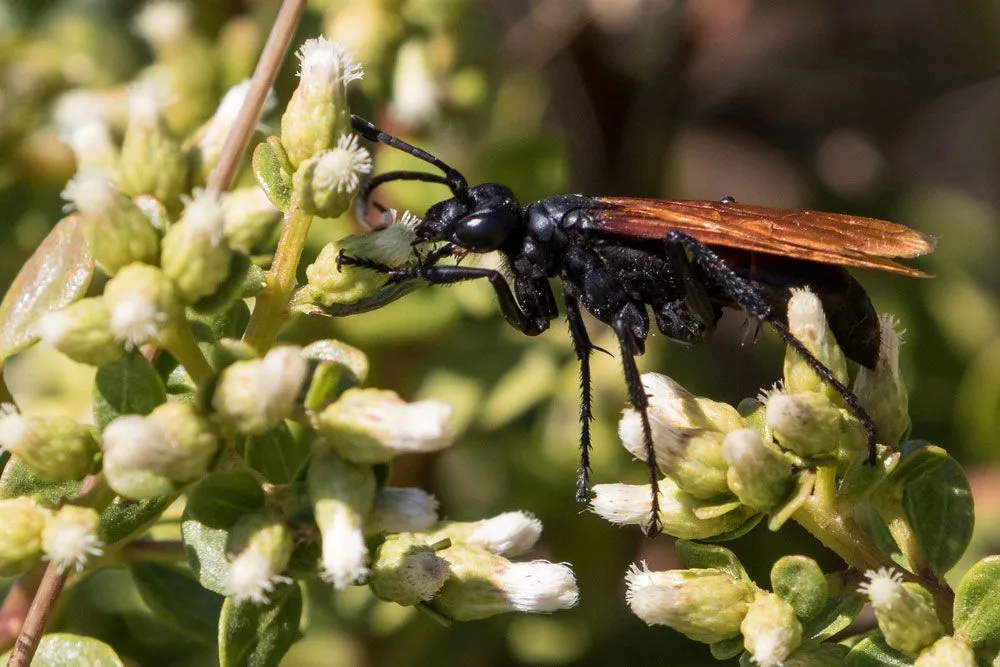
The sting of a tarantula hawk is renowned for its excruciating pain, which has earned the insect a spot among the most painful stingers in the world. The sting is delivered by the female wasp, who uses it primarily to paralyze tarantulas. The pain, described as intense and burning, is a result of the venom injected into the victim’s body. The venom contains a complex mixture of compounds that affect the nervous system, causing immediate and debilitating pain. The tarantula hawk’s sting serves a crucial purpose in its life cycle, but its severity has made it a subject of both scientific inquiry and popular fascination.
The Intensity of the Sting
The intensity of the tarantula hawk’s sting is often compared to other painful stings, such as those from bullet ants or executioner wasps. Based on the Schmidt Sting Pain Index, the tarantula hawk ranks as one of the most painful stings. The pain from the sting is not only intense but also long-lasting, often described as a burning sensation that can last for several minutes. The impact of the sting can be severe, leading to a range of physical and psychological effects. The Schmidt Sting Pain Index provides a comparative scale that allows us to understand the severity of the tarantula hawk’s sting within the context of other stinging insects. This comparison gives a better sense of the tarantula hawk’s unique characteristics.
Venom Composition and Effects
The venom of the tarantula hawk contains a complex array of compounds that contribute to its potent effects. The specific composition of the venom can vary between different species, but it generally includes neurotoxins that target the nervous system. These neurotoxins block nerve signals, causing paralysis and intense pain. Research into the venom’s components has revealed potential applications in the fields of medicine and biotechnology. The study of the venom’s effects also provides insights into the intricate interactions between predator and prey, and the evolutionary adaptations that drive these interactions. As of now there is no real known use, other than as a pain reference.
Benefits and Ecological Role
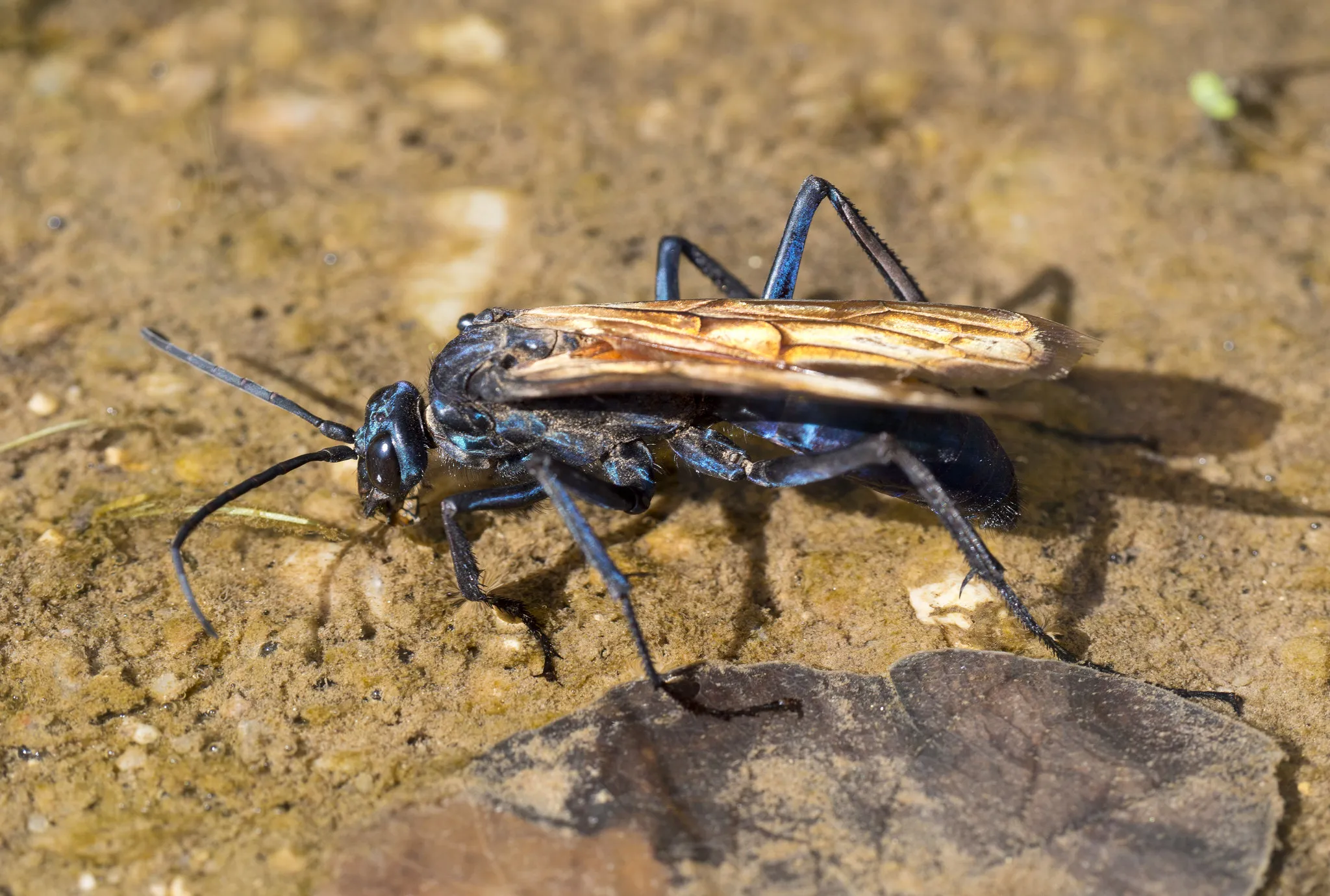
Tarantula hawks play a vital role in the ecosystem, serving as a key predator and contributing to the balance of nature. The wasps help regulate tarantula populations, preventing them from becoming overly abundant. The tarantula hawks’ predation helps control the tarantula numbers and maintains the health of the environment. By controlling the tarantula populations, they indirectly contribute to the health and stability of the entire ecosystem. The wasps also have a role in pollination. The presence of tarantula hawks in an area indicates a healthy environment. Understanding their role allows for a deeper appreciation of the intricate relationships within ecosystems.
Predator Control
As apex predators in their microhabitats, tarantula hawks exert significant control over tarantula populations. By preying on tarantulas, the wasps help prevent population explosions and maintain a healthy balance. Their predation reduces competition for resources, allowing a greater diversity of species to thrive. The wasps help to regulate the ecosystem. These wasps act as natural pest controllers, benefiting the broader ecosystem. Their hunting behavior is a testament to the complex interactions within nature and the importance of predator-prey relationships.
Pollination and Ecosystem
In addition to their predatory role, tarantula hawks can contribute to pollination, which is essential for the survival of many plant species. While not primary pollinators, the wasps visit flowers for nectar, inadvertently assisting in pollen transfer. This activity supports the growth and reproduction of flowering plants, further contributing to the overall health of the ecosystem. Even the indirect involvement in pollination highlights the complex and interconnected nature of ecosystems. The tarantula hawk’s presence promotes a flourishing environment.
Conservation Status and Threats
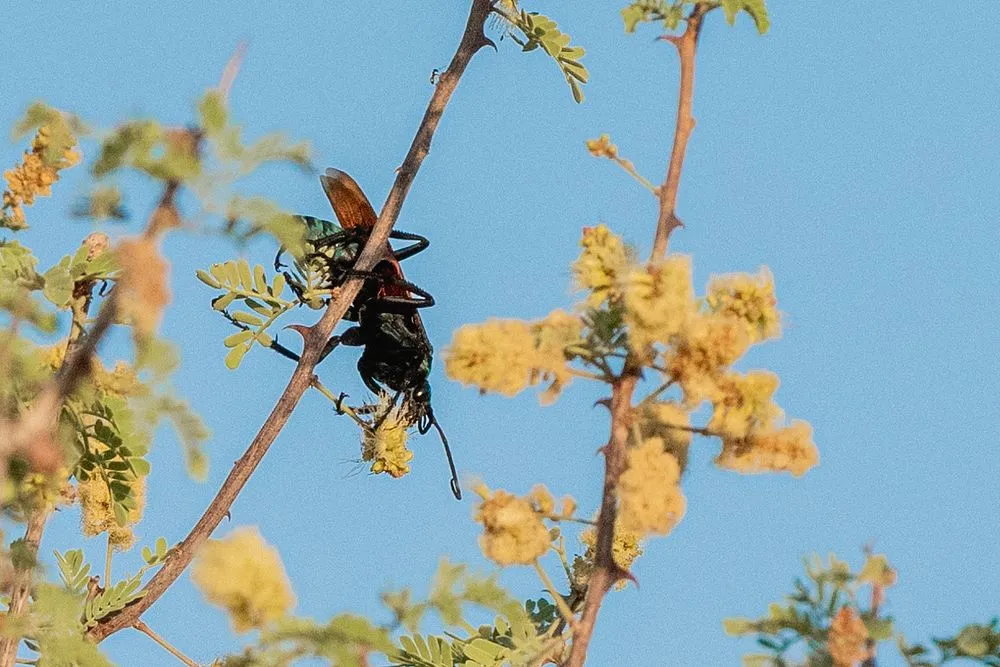
The conservation status of tarantula hawks is currently not considered under threat, they are a natural component of the South Texas ecosystem. However, they do face several threats that could impact their populations, which need to be understood for maintaining the health of the ecosystem. Habitat loss, pesticide use, and climate change are among the potential threats to the wasps, and these threats highlight the importance of conservation efforts. Protecting the tarantula hawk requires the preservation of their habitats and implementing measures to mitigate environmental stressors.
Current Population Trends
The population trends of tarantula hawks are generally stable, but monitoring efforts are essential to detect any potential declines. The data on population sizes and distribution is limited and requires ongoing assessment. The impact of human activities and environmental changes on tarantula hawk populations is an important area of study. Regular monitoring can identify potential conservation needs, such as habitat restoration or reduction of pesticide use, to support the tarantula hawk’s long-term survival. Efforts to monitor the species is a testament to commitment of the conservation of this insect.
Threats to Tarantula Hawk
Several threats endanger the tarantula hawk, including habitat loss, pesticide exposure, and climate change. Habitat loss due to deforestation, urbanization, and agricultural expansion removes essential hunting and nesting grounds. Exposure to pesticides, especially those used to control other insects, can be harmful to the wasps. Climate change can disrupt their habitats, affecting their prey and nesting cycles. Awareness and mitigation efforts are vital for protecting tarantula hawk populations. Conservation strategies such as habitat preservation and sustainable practices will ensure their survival.
